The problem is that unless you tell it otherwise, NUnit will spawn a subprocess to run tests when it determines it necessary. If you watch it in Process Explorer, you can see that "nunit-console.exe"* spawns "nunit-agent.exe"*. The Visual Studio debugger doesn't automatically attach to child processes.
In this case, I believe the version mismatch is why it chooses to start a subprocess. The easiest way to work around this is to edit "nunit-console.exe.config"* to change the set of <supportedRuntime> values. There should already be a comment there marking the line that you should comment out in order to force it to run as .NET 4.0:
<startup useLegacyV2RuntimeActivationPolicy="true">
<!-- Comment out the next line to force use of .NET 4.0 -->
<supportedRuntime version="v2.0.50727" />
<supportedRuntime version="v4.0.30319" />
</startup>
Once you change that, the first NUnit process will already be .NET 4.0 and it shouldn't need to spawn a subprocess. If you want to be sure, specify /process=Single and NUnit will either run in a single process or fail immediately if it cannot.
* - If you need to use the x86 versions, substitute:
nunit-console.exe -> nunit-console-x86.exe
nunit-agent.exe -> nunit-agent-x86.exe
nunit-console.exe.config -> nunit-console-x86.exe.config

